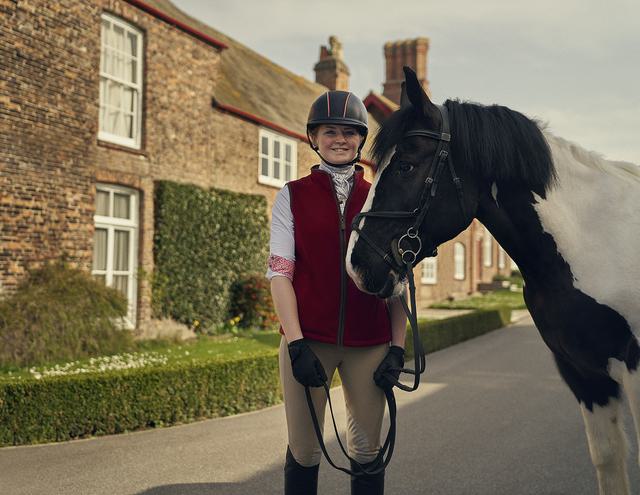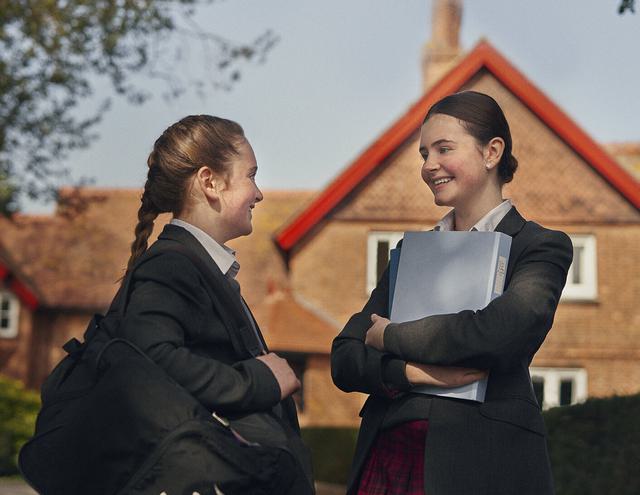French battlefield and culture trip November 2024
French and Geography Trip - Nov 2024
Published Friday 8th November 2024

In the first weekend of half term, 18 girls made their way to France for a History and French battlefield and culture trip.
LillyRose told us more:
As we arrived slightly earlier than expected, we spent the first few hours at the chateau exploring and wandering around the estate. After eventually tiring ourselves out from a game of football (which I wouldn’t recommend playing in Crocs!), it was time to eat. After dinner, we had our first activity of the trip: crêpe making. We were instructed in partial French about which ingredients to add and how to achieve the perfect consistency. Although not all of us had studied French recently, most of us could understand what was being said. It was really exciting to realise how much French I could personally remember, given that I hadn’t studied it since my third year (three years ago!).
The next day, we headed to a French boulangerie (bakery) where we learned about the importance of bread in French culture. Bruno, the owner, told us that “it is the most important thing on the table.” We even got to handle some dough, rolling it into loaves to prove before baking it in a traditional 200-year-old oven. It was fascinating! After this, we sampled some pastries from the bakery and were blown away by the incredible standard of such a simple village bakery.
Afterwards, we took the bus to visit the old fortress in Boulogne-sur-Mer. It was lovely to walk along the town walls, which were strangely reminiscent of the York city walls, making it feel almost like home! After some postcard shopping and wandering the streets, we headed back on the bus to the Nausicaá Sea Centre, named after Princess Nausicaá from the Odyssey (can you tell I take Classics?).
The Nausicaá Centre was amazing. We first watched a sea lion show entirely in French. From what I could understand, the sea lions were taught tricks to keep them mentally stimulated, as in the wild they would usually spend their days hunting. We then began to explore the various exhibits. It was really interesting to notice the differences between what we call certain fish in English versus French. A notable difference between aquariums in France and England is that some areas have open tanks where children are encouraged to touch the fish. I found this fascinating, as the children seemed to have a great respect for the fish and were very gentle with them. And of course, we also visited the gift shop! A wide variety of plush sea creatures were bought, from sea lions (“lion de mer”), turtles (“tortue”), and even stingrays (“raie pastenague”).
The next day was more history-focused. We first visited Wellington Quarry, where we had a guided tour and learned about the miners who dug tunnels to connect the quarries. We wore headsets throughout our time in the tunnels, which played readings of soldiers’ letters as they awaited the battle that would eventually take place above them. It was very moving to hear about their worries and hopes, especially when we saw the area where a form of church service would have been held just before Easter. It made us all feel much more connected to the past. Another moment that struck us emotionally was seeing the different sets of directions on the walls: one from the First World War and another from the Second. The thought that the men who wrote the original signs believed it would be the last time someone marked those walls was quite poignant.
After this, we headed to the battlefield of the Somme, the site with the highest casualties of any battle in World War One. The area features a massive crater known as the Lochnagar Crater, roughly as deep as the Burj Khalifa is tall. The crater was filled with wildflowers, and surrounding it were informational stands about the men who died there. Every single man’s name was inscribed on plaques along the walkway, ensuring they would be remembered. I was personally very moved by the sight. It was unsettling to realise that all these men gave up their lives for peace, and yet there is still conflict in the world today.
Next, we visited the Thiepval Memorial, which commemorates the names of men missing in action. Seeing so many names packed closely together really brought home the enormity of the loss in that area. Reading the names and imagining who these men might have been was an incredible opportunity. So often, names are forgotten by history, and it felt like we were playing a small part in helping them be remembered.
We then "walked to Canada"—or at least to Canadian territory: Newfoundland Park. The views were stunning, especially as the autumn colours began to turn the trees. It was one of the most beautiful sights I’ve ever seen.
I am so grateful to have had the opportunity to visit all these amazing places and to join the rest of the world in remembering those who sacrificed themselves for peace. As someone who hopes to go into politics, this experience has reminded me how important it is to be connected to those who have secured our right to do what we do today. A massive thank you to Mr Aston and Mrs Debenham for taking us and making this journey so wonderful!













































